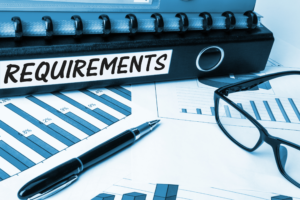Generative AI has rapidly evolved to reshape content creation and customer engagement across industries, enabling advancements in text, image, audio, and video generation. Unlike descriptive AI, which analyzes past data to describe trends, or predictive AI, which forecasts future events based on historical patterns, generative AI actively creates new content. Among these innovations, Large Language Models (LLMs) stand out as pivotal tools, empowering businesses with text-based automation that closely mimics human interaction. From enhancing customer support to automating content creation, LLMs like OpenAI’s GPT-4 and Google’s BERT deliver high-quality responses and insights that drive efficiency and elevate user experiences.

What Are Large Language Models (LLMs)?
Large Language Models (LLMs), such as OpenAI’s GPT-4 and Google’s BERT, are advanced algorithms that learn to predict the next word in a sequence, allowing them to generate coherent and contextually relevant text. By analyzing vast amounts of text data, LLMs learn the patterns, structures, and nuances of language, enabling them to respond to user prompts with human-like accuracy.
While LLMs are highly sophisticated, they are not without limitations. These models are continually improving, becoming more precise and context-aware with each generation. LLMs power a range of applications, from virtual assistants and chatbots to content creation tools, supporting tasks as varied as answering FAQ-style questions to drafting detailed articles. Their ability to automate communication and produce content efficiently has made LLMs invaluable across numerous industries.
For a detailed analysis of different types of LLMs, visit Artificial Analysis.
Key Applications of LLMs
Customer Service Enhancement: LLM-powered chatbots are revolutionizing customer service by handling routine inquiries, assisting with troubleshooting, and escalating issues when necessary. This application is especially impactful in high-demand environments like call centers, where LLMs can manage common questions, allowing human agents to focus on complex cases that require a personal touch.
Content Creation: Companies increasingly rely on LLMs for content generation, from drafting blog posts and social media updates to summarizing lengthy reports. This application has transformed marketing by enabling brands to produce consistent, high-quality content efficiently. For example, LLMs help businesses keep pace with content demands by automating the creation of product descriptions, emails, and creative ad copy.
Educational Support: In education, LLMs assist students by providing personalized learning materials, answering questions, and even supporting teachers with tasks like grading. This application frees educators to focus on direct instruction and meaningful interactions in the classroom.
Benefits of Large Language Models (LLMs) in Customer Service
Large Language Models (LLMs) are transformative for customer service, enhancing customer satisfaction, reducing operational costs, and improving overall efficiency.
Efficiency and Speed: LLM-powered chatbots and virtual assistants can instantly manage routine customer inquiries, allowing human agents to focus on more complex issues. Research shows that LLMs in customer service can reduce average handling times by 20%, which significantly improves customer satisfaction. According to McKinsey’s AI customer service maturity model, companies at advanced levels can automate 50-80% of customer interactions, addressing needs proactively and enhancing engagement (McKinsey & Company, source).
Cost Reduction: By automating routine tasks, LLMs reduce the need for large customer service teams, potentially lowering operational costs by up to 30%. This cost-saving advantage makes LLMs a strategic investment for customer service departments, enabling high-quality service delivery with fewer resources. At peak maturity, McKinsey reports that some companies handle up to 95% of customer interactions through AI and digital channels, reducing dependency on human-assisted interactions and substantially lowering costs.
Improved Accuracy and Consistency: LLMs provide standardized, high-quality responses, minimizing human error and ensuring that customers receive consistent, accurate information. Additionally, these models continuously learn from each interaction, further enhancing the quality and reliability of customer service over time. This aligns with McKinsey’s findings, highlighting how advanced AI systems foster a more consistent, reliable, and customer-centered service experience, ultimately boosting customer satisfaction and loyalty (McKinsey & Company, source).
Steps to Set Up a Generative AI System
Implementing a text-based generative AI system involves a structured approach to ensure effective integration and optimal performance. Below is a detailed roadmap outlining each phase and its corresponding tasks:

- Define Goals and Objectives
- Assess Organizational Needs: Evaluate current processes to identify areas where generative AI can add value, such as improving customer response times, increasing productivity, or reducing costs.
- Engage Stakeholders: Collaborate with department heads and key personnel to gather insights on potential applications and desired outcomes.
- Set Clear Objectives: Establish measurable goals to guide the system’s design and functionality.
- Select the Appropriate AI Model
- Evaluate Model Options: Research available models, including open-source options like GPT-Neo and commercial AI solutions tailored to specific industries.
- Assess Performance Metrics: Review benchmarks such as accuracy, latency, and scalability to ensure the model aligns with your requirements.
- Consider Integration Capabilities: Ensure compatibility with existing systems and workflows for seamless integration.
- Develop and Customize the AI Model
- Data Collection: Gather relevant datasets that reflect the needs and language style of your business, ensuring diversity and quality.
- Data Preprocessing: Clean and preprocess data, including tokenization, normalization, and augmentation, to prepare it for training.
- Model Training: Train the AI model using appropriate algorithms and techniques, exposing it to your data to learn from relevant interactions.
- Fine-Tuning: Adjust the model on domain-specific data to align it with company values and meet customer expectations.
- Integrate and Test the AI System
- Set Up Deployment Environment: Prepare infrastructure, including servers and cloud services, for hosting the AI system.
- Integration: Incorporate the AI system into existing workflows, such as CRM platforms or customer support channels.
- Testing: Conduct unit, integration, and user acceptance testing to ensure the AI performs as expected and interacts seamlessly within the system. Pilot tests can help identify areas for improvement.
- Ensure Security and Compliance
- Implement Access Controls: Define user roles and permissions to safeguard sensitive information.
- Conduct Security Audits: Regularly assess the system for vulnerabilities and compliance with regulations.
- Establish Data Privacy Measures: Ensure adherence to data protection laws and best practices.
- Monitor and Maintain the AI System
- Performance Monitoring: Track metrics such as response time, accuracy, and user engagement to assess the system’s effectiveness.
- Regular Updates and Retraining: Schedule periodic reviews and updates to incorporate new features and improvements, ensuring the AI adapts to changing business needs and customer expectations.
- Maintain Compliance: Stay informed about regulatory changes and ensure ongoing adherence
Final Thoughts
LLMs are no longer just experimental technology—they are indispensable tools that redefine efficiency, engagement, and innovation across industries. By adopting and fine-tuning LLMs, businesses can transform routine processes and open new possibilities in customer experience and content delivery, ensuring they stay competitive in an increasingly digital world.





